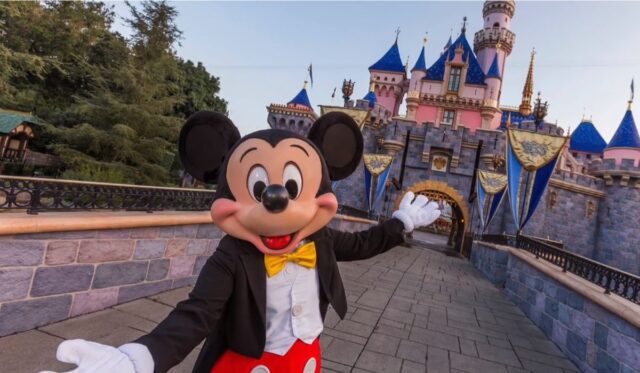Disney is known for maintaining a squeaky-clean image, almost as pristine as the floors Cinderella’s stepmother insisted on. However, getting the rights to use Disney’s likeness has always been a tricky affair due to their strict copyright controls.
In the U.S., copyrights have a lifespan. They’re only valid for 95 years for older works. Once that period is up, the material becomes public domain, which means it’s up for grabs for anyone to use in any way they fancy. With Disney’s 100th anniversary just around the corner, there’s been a noticeable uptick in edgier interpretations of our beloved Disney classics.
The Prime Example: Winnie the Pooh: Blood and Honey” took a daring twist on the classic tale. Released in February after Winnie and his iconic gang entered the public domain, this slasher film explored a wild “what if” scenario: What if, after Christopher Robin went off to college, his cherished childhood friends took a dark turn and started hunting down unsuspecting young adults?
Despite its shocking premise, the movie, hailed by some as a cult classic in the making, managed to pull in around $5 million globally, as per IMDb. Not bad for a film that was produced on a shoestring budget of under $100,000 and shot in a mere 10 days. With the initial success, the indie filmmakers behind the project announced plans for a sequel, suggesting they’re far from done reinventing beloved characters in unexpected, darker roles.
- Following that comes the film titled Bambi: The Reckoning, wherein the beloved deer character is portrayed as a “ferocious predator that stealthily inhabits the natural environment,” as stated by the filmmaker in an interview with Dread Central.
- The development team is also engaged in the creation of a game titled “Peter Pan’s Neverland Nightmare.
Walt might not be thrilled with the latest developments, but there are limits to the creative liberties filmmakers can take. Currently, only the original children’s book versions of characters like Winnie, Bambi, and Peter have lapsed copyrights, not the Disney versions we’ve grown to love.
This distinction means those reinventing these classics need to tread carefully. For instance, the “Blood and Honey” crew deliberately excluded Tigger, as he was introduced in A. A. Milne’s later Winnie-the-Pooh books. However, with that copyright set to expire next year, we might just see a more menacing Tigger in the sequel to “Blood and Honey.” Stay tuned!
Next year holds a significant moment for those keen on reimagining Disney classics. The 1928 short film, “Steamboat Willie,” which introduced us to the early versions of Mickey and Minnie, is set to enter the public domain on January 1, 2024. However, even as this original Mickey takes this leap, Disney won’t just stand by. The entertainment giant has a range of legal avenues to protect its iconic mouse, and it’s more than ready to use them.
Why a Mickey Slasher is Pretty Unlikely?
Previously, Disney had lobbied Congress to extend copyright durations whenever Mickey was on the verge of becoming public domain. This time, however, it seems they might not take that route. So, Mickey could soon be available for reinterpretation, but with a catch. Initially, only the earliest version of Mickey – the silent, black and white character with those distinctive big eyes – would be available for use. But as time moves on, his later versions will also find their way into the public domain.
- When copyright protections for the 1929 motion picture The Karnival Kid, which featured Mickey Mouse in his first speaking part, expire, imitations of the character may begin to use his voice.
- The mouse didn’t become modern until Fantasia in 1940, so it will be another few decades before the vibrant Mickey that we all know and love becomes widely recognized.
While Disney’s copyrights on characters like Mickey might eventually run out, they have another line of defense: trademarks. Unlike copyrights, trademarks don’t have an expiration date.
Even if you credit the original source and clarify that your use of the trademark isn’t endorsed by the holder, Disney might still have grounds to intervene. The iconic image of Mickey at the helm in Steamboat Willie, especially since its incorporation into the Walt Disney Animation Studios intro in 2007, is so closely tied to Disney’s brand. As a result, Tyler Ochoa, a law professor at Santa Clara University’s High Tech Law Institute, believes Disney could argue that any new depiction of the character might confuse audiences and tarnish their reputation.
Ochoa remarked to Morning Brew, “After Disney’s copyrights expire, they still have the shield of trademarks. Knowing Disney’s history of legal battles, many creators might not want to risk it.”
However, all hope isn’t lost for those eager to reimagine Mickey. The fact that Disney didn’t pursue the makers of “Winnie the Pooh: Blood and Honey” suggests that there’s some leeway. This could be because the film veered far from Disney’s family-friendly image, making it unlikely that viewers would mistake it for an official Disney product.
Regarding potential adaptations of Steamboat Willie’s Mickey, Ochoa believes that Disney might only step in if they feel a project truly tarnishes their image, especially if the public assumes it’s Disney-endorsed when it’s not.

















